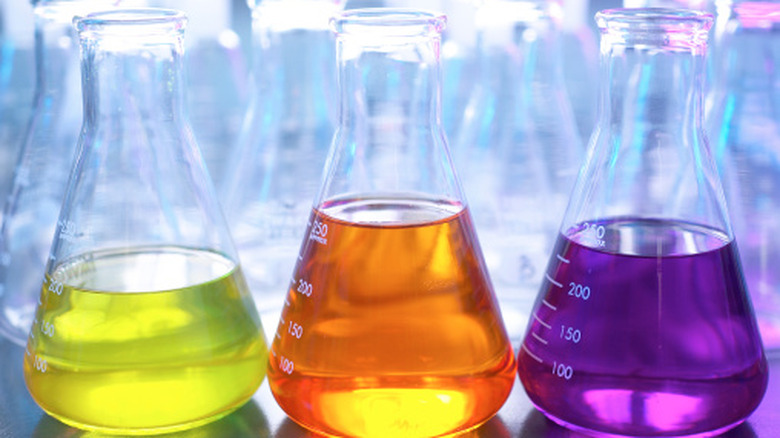How To Convert Milligrams Per Liter To Molarity
When working with chemical solutions in the lab, there is usually a concentration associated with them. The concentration of a solution is often given in molarity (moles of solution per liter solution). Sometimes, however, it can be given by milligrams or grams of solute per liter solution (mg/L or g/L). To go from mg/L to moles/L you will need to convert mg to moles. How do you do that?
Well, you make use of the molar mass of the solute! This allows you to convert from grams of a substance to moles of a substance.
Converting from milligrams to grams
Say you have 1,567 milligrams of NaCl in 1 liter of solution. How would you calculate the molarity? Well, first you need to convert the solute (NaCl) from milligrams to grams. And then you can go from grams to moles.
There are 1,000 milligrams in every gram. This gives a conversion factor to change the quantity of 1,567 milligrams into grams: 1,567 milligrams x (1 gram/1,000 milligrams) = 1.567 grams. By making sure that the units cancel, you can be sure that you are using the conversion factor correctly. Thus, you can see that 1,567 milligrams of NaCl is the same as 1.567 grams of NaCl.
Why convert from milligrams to grams? Because the molar mass of the solute gives you the mass of a substance per mole of that substance.
Converting from grams to moles
To convert from grams to moles, you need to use the molar mass. The molar mass of a substance is calculated by adding together the molar mass of the components involved. For example, for NaCl, you would need the molar mass of sodium and the molar mass of chloride. You can find these using the periodic table.
The molar mass of sodium is 22.99 grams/mole, or g/mol, and the molar mass of chloride is 35.45 g/mol. Added together, this makes the molar mass of NaCl 58.44 g/mol. Using this conversion factor, you can convert from grams of NaCl to moles of NaCl: 1.567 grams NaCl x (1 mol NaCl/58.44 g NaCl) = 0.027 mol NaCl. In 1.567 grams of NaCl, there are 0.027 moles of NaCl. Now that you know there are 0.027 moles of NaCl, you can divide by the total volume (1 L) to find the molarity: 0.027 mol NaCl/1 L = 0.027M NaCl. The concentration of a 1 liter solution containing 1,567 milligrams is thus 0.027M.
Take a look at the following examples that convert g/L to molarity in one step and convert mg/mL to molarity in one step.
Convert from mg/mL to molarity
What is the molarity of a 15 mg/mL solution of magnesium chloride? First, mg/mL is the same as g/L. This makes it a little easier because you don't need to convert between milligrams and grams or milliliters and liters. With the concentration in g/L you can then convert grams to moles (the molar mass of MgCl2) and you'll have the molarity. Take a look: (15 g MgCl2/1 L) x (1 mol MgCl2/95.21 g MgCl2) = 0.16M MgCl2.
What if you have a protein solution and the concentration is given to you in mg/mL? Say you have a solution of proteinase K that is 25 mg/mL. How would you find the molarity of this solution? You can make use of the molecular weight of the protein. Proteinase K is 29,800 kDa, which is about the same as 29,800 g/mol. This gives you another conversion factor. Here's how you would find the concentration of the solution: (25 g proteinase K/1 L) x (1 mol proteinase K/29,800 g proteinase K) = 8.4 x 10^-4 M proteinase K.
This means that a 25 mg/mL solution of proteinase K is the same as a 8.4 x 10-4 M solution of proteinase K. Saying 25 mg/mL is much easier than 8.4 x 10-4 M, so sometimes talking about concentrations in milligrams per milliliter can be easier.
